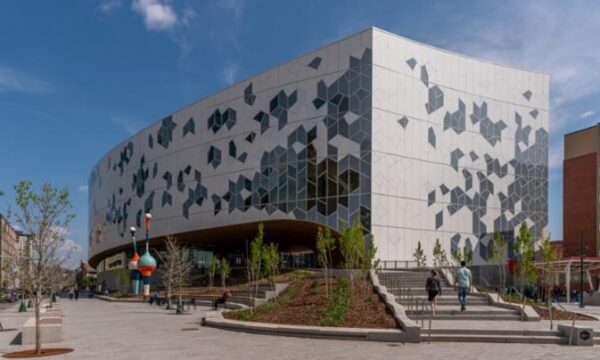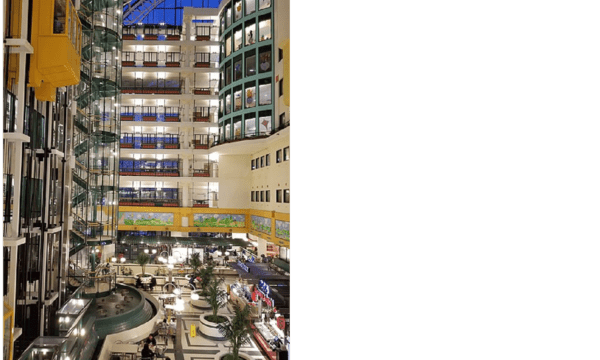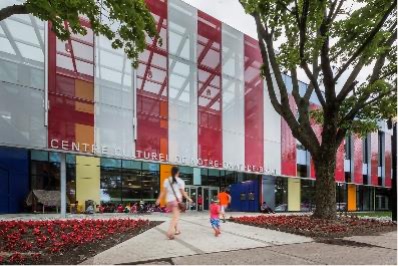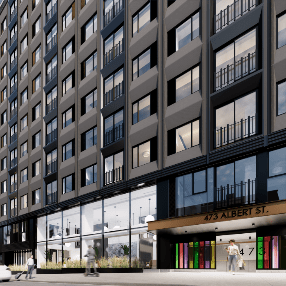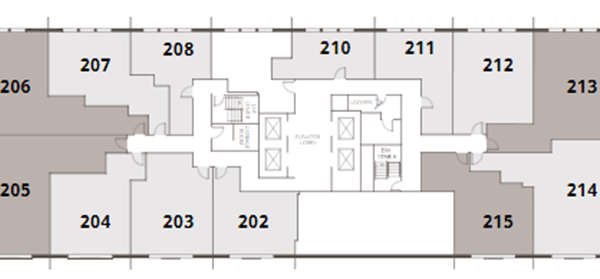The Slayte – Ottawa
“I particularly remember visiting The Slayte at 473 Albert Street in Ottawa. The Slayte is one of Ottawa’s first office-to-residential conversions. The former federal downtown office building was converted into luxurious apartments. This reuse project reflects quality in the built environment because it has improved downtown health through the increased vibrancy and sense of place, provided more housing, and met broader sustainability goals. In addition, converting 473 Albert reduced waste and carbon emissions while utilizing an unutilized space. Although this project had its challenges, for example, managing the city’s stormwater requirements and creating fire exits, this project exemplifies how reuse does not limit creativity. Each unit was thoroughly thought out and has a unique layout (Figure 2). The project also shows how the benefits of reusing a building, such as accelerated project timelines, safer construction processes, improved public realm, and reduced land consumption outweighs the challenges. Studies show that high office vacancy rates can have damaging impacts, such as maintenance issues, increased crime in the downtown, decreased livability, and business loss in the core. With the federal government vacating older office buildings in place of larger consolidated office complexes, there is an opportunity for building reuse. Finally, this project shows how older and less desirable office spaces are excellent candidates for housing. However, there are elements of this project that could be improved, such as creating affordable rental units and reusing more of the original materials. Nonetheless, this is still a good starting point.
This building stood out to me as it provided me with hope for the future of our built environment. The Slayte is an example of the potential of converting buildings and can act as a precedent for future projects in Ottawa. More projects like the Slayte will revitalize Ottawa’s downtown while aiding in the climate and homelessness crises. However, challenges such as lengthy planning processes, limited awareness of the benefits of reuse, lack of incentives, and high government fees, make it difficult for quality projects like these to become the standard. I hope that the success of this project, paired with the research and outputs of Carleton’s research on adaptive reuse in this grant, will inspire and champion projects like the Slayte.” (Booklet Positive Lived Experiences of Quality in the Built Environment 2023, p.111).
Google map link: https://www.google.com/maps?sca_esv=52c5d4c891ee706e&sca_upv=1&rlz=1C1ONGR_frCA1034CA1034&output=search&q=the+slayte+ottawa&source=lnms&fbs=AEQNm0Aa4sjWe7Rqy32pFwRj0UkWd8nbOJfsBGGB5IQQO6L3J3ppPdoHI1O-XvbXbpNjYYwWUVH6qTfR1Lpek5F-7GS5G77zCDGUiyO9thp-XYOUMVsJpRhbFcWy4IU4pxS9E7JnXPbjQI5tRXuwgeJ4fWA4iqrMlyHXXkVXs3yGcEmMx9GjpWIRXIYx_VuOLDn0QtiTNb4BK3R1rACK6tiORqWMFWFWKg&entry=mc&ved=1t:200715&ictx=111
Discover similar lived experiences
